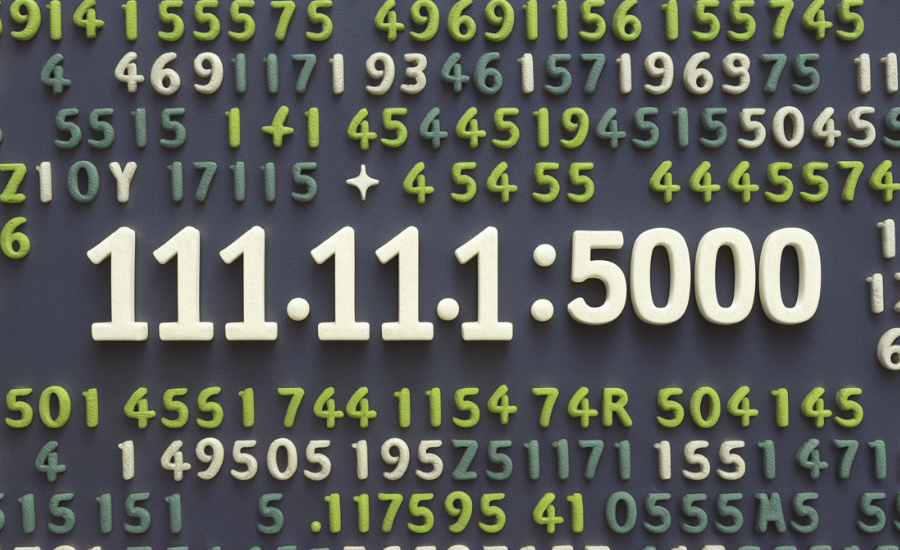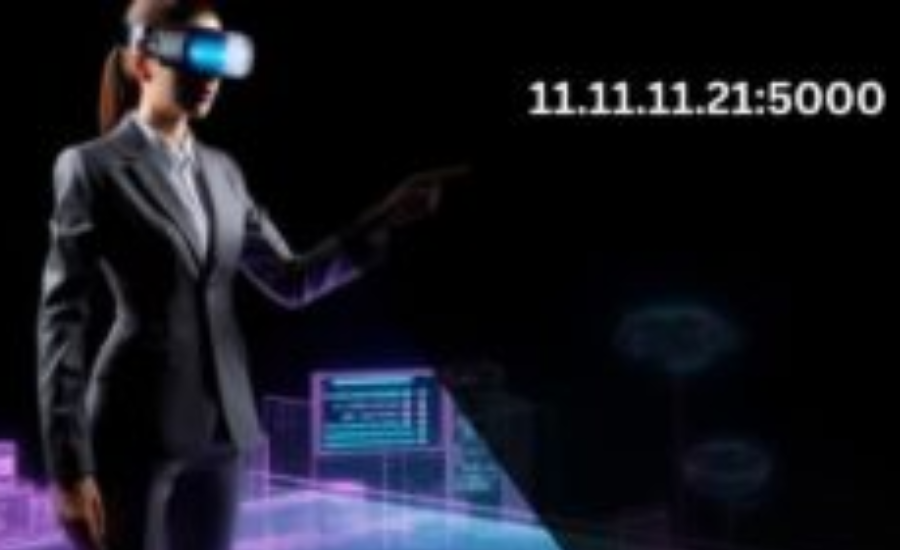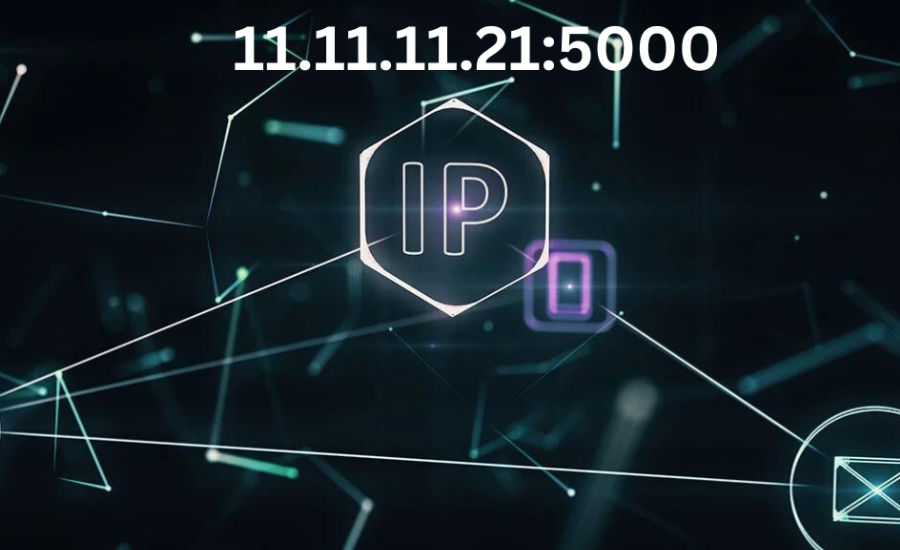The term “11.11.11.21:5000” represents a distinctive numerical sequence with considerable relevance in the digital realm. In this expanded discussion, we will delve into the origins of this keyword, explore its technical intricacies, and examine how it influences multiple industries and technological domains. By uncovering its background and applications, we aim to shed light on the broader implications of this seemingly simple yet complex string of numbers.
An Introduction to the Term “11.11.11.21:5000”

The sequence “11.11.11.21:5000” is more than just a random set of numbers; it represents an IP address paired with a port number, fundamental in the realms of networking and web development. This unique combination plays a vital role in pinpointing specific devices and services within a network. By directing internet traffic efficiently, it ensures seamless communication between different systems and devices, making it an essential element in the infrastructure that powers the digital world. Understanding its function helps to grasp the underlying mechanisms that keep the internet running smoothly and securely.
Significance and Role in the Modern Digital Era
In the current digital landscape, the combination of IP addresses and port numbers is fundamental to the operation of the internet. These elements are critical in directing data traffic, managing network connections, and ensuring robust security measures. The sequence “11.11.11.21:5000” exemplifies the intricate coordination of these components, working together to maintain the seamless connectivity and functionality of our online world. By understanding the importance of such combinations, we gain insight into how they support the infrastructure that powers our daily digital interactions.
The Genesis of 11.11.11.21:5000
Historical Context
The foundation of IP addresses can be traced back to the early stages of the internet when they served as basic numerical tags for identifying devices. As the internet grew more complex, the system evolved to include port numbers, which are essential for pinpointing specific services on a device, enhancing the precision and functionality of network communication.
Initial Implementation and Significance
The combination “11.11.11.21:5000” emerged during the development of experimental networks. Researchers and developers, in their quest to test emerging protocols and services, found this specific sequence to be an effective and practical tool. Its use in such environments marked a key moment in the evolution of networking practices, providing a tangible way to explore new possibilities in digital communication.
Contributors and Key Organizations
The evolution of IP addressing and port numbering owes much to the efforts of prominent individuals and organizations. Notably, the Internet Engineering Task Force (IETF) has been instrumental in setting the standards that govern these systems. Their work has been crucial in shaping the way devices communicate over the internet, ensuring consistency, reliability, and security across global networks.
Technical Analysis

Understanding the Components: IP Address and Port Number
An IP address serves as a distinctive numerical label assigned to a device within a network. This label typically comprises four groups of numbers, each separated by periods. Following the IP address is the port number, denoted after a colon, which identifies a specific service or application on the device. The combination of these two elements allows for precise communication and service access within a network.
Role in Networking and Web Development
In the context of networking, the sequence “11.11.11.21:5000” functions by routing data to the correct device and specific service associated with that device.
Addressing Common Misunderstandings
A common confusion arises between IP addresses and domain names. While domain names are more user-friendly, serving as memorable addresses for websites, IP addresses are the underlying numerical identifiers that devices use to locate and communicate with one another.
Importance in Cybersecurity
Role in Cybersecurity Strategies
IP addresses and port numbers play a critical role in cybersecurity efforts. They are key components in monitoring network activity and regulating access to ensure that only authorized users can connect.
Practical Applications in Security Measures
Firewalls and similar security tools utilize IP addresses and port numbers to filter and manage incoming and outgoing traffic.
Addressing Potential Vulnerabilities
Despite their importance, IP addresses and port numbers can also be targeted by cybercriminals. Hackers often attempt to exploit specific ports to gain unauthorized access to network services. These practices help close potential security gaps, making it more difficult for attackers to exploit vulnerabilities and ensuring that the network remains secure.
Practical Applications
Case Studies Highlighting Its Usage
The sequence “11.11.11.21:5000” has been employed in a variety of experimental and operational networks. For instance, it was utilized in a test network designed for a new web service protocol, enabling developers to fine-tune their systems and improve functionality. This specific combination served as a crucial tool in the iterative process of refining network protocols and ensuring robust service delivery.
Industries and Sectors That Benefit
Numerous industries rely heavily on the use of IP addresses and port numbers to maintain efficient and secure network operations. Sectors such as telecommunications, finance, and healthcare use these digital identifiers to manage extensive networks, ensuring that data flows securely and reliably across various platforms and services. The precision provided by combinations like “11.11.11.21:5000” is essential for supporting the complex infrastructure of these industries.
Future Trends and Innovations
The future of IP addressing and port numbering holds significant promise, especially with the ongoing transition to IPv6. This next-generation internet protocol will vastly expand the pool of available IP addresses, accommodating the growing number of devices that require unique identifiers. As more devices become interconnected, the expanded capacity provided by IPv6 will allow for smoother and more efficient communication across networks, paving the way for innovative developments in various technological fields.
Cultural Significance

Impact on Popular Culture and Media
IP addresses and port numbers have made their mark on popular culture, becoming a staple in movies, TV shows, and even books. Their presence in various forms of media underscores the role they play in our everyday lives and reflects the growing awareness of their importance.
Appearances in Literature, Movies, and Video Games
In literature, films, and video games, IP addresses are frequently employed to bring a sense of authenticity and technical accuracy to stories. For example, a hacker character might use an IP address like “11.11.11.21:5000” to track down a target, lending credibility and realism to the plot. This kind of detail helps immerse the audience in the narrative, making the depiction of digital scenarios more believable.
Public Perception and Misconceptions
IP addresses and port numbers are often surrounded by misconceptions and myths. One common belief is that they can be used to track individuals with pinpoint accuracy, leading to privacy concerns. However, in reality, these numbers primarily serve as tools for managing and directing network traffic, rather than as instruments for surveillance.
Summary
The keyword “11.11.11.21:5000” is a distinctive sequence representing an IP address combined with a port number, essential in networking and web development. This combination plays a critical role in directing internet traffic, ensuring seamless communication between devices. Its significance extends to various industries such as telecommunications, finance, and healthcare, where it supports secure and efficient network operations. Additionally, the combination “11.11.11.21:5000” has influenced cybersecurity strategies by helping to regulate network access and protect against unauthorized intrusions. Beyond its technical importance, this sequence has also found a place in popular culture, frequently appearing in literature, films, and video games to add authenticity to digital narratives. Despite its widespread use, there are common misconceptions about IP addresses and port numbers, often misunderstood as tools for surveillance when, in reality, they primarily manage network traffic.
FAQs
1. What does “11.11.11.21:5000” represent?
“11.11.11.21:5000” represents an IP address followed by a port number. The IP address identifies a specific device on a network, while the port number specifies a particular service or application on that device.
2. How is “11.11.11.21:5000” used in networking?
In networking, “11.11.11.21:5000” directs data to the correct device and service. The IP address points to the server, and the port number ensures the data reaches the intended service on that server.
3. How does “11.11.11.21:5000” influence different industries?
Industries like telecommunications, finance, and healthcare rely on such combinations to manage network operations, ensuring that data flows securely and efficiently across various services and platforms.
4. Are there any misconceptions about IP addresses like “11.11.11.21:5000”?
Yes, a common misconception is that IP addresses and port numbers can be used to track individuals. In reality, they are primarily tools for managing and directing network traffic, not for personal surveillance.
Don’t Miss Out—Read Now: Essential Discover











